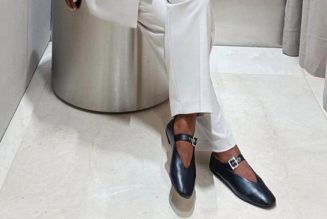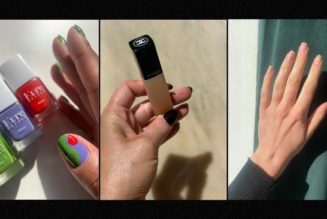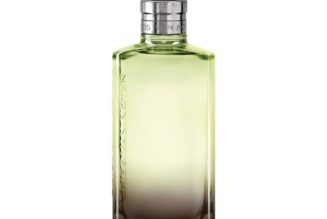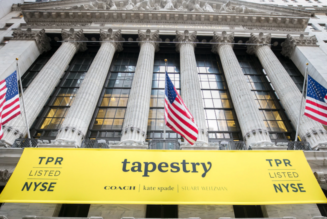
According to a Nosto study, 20% of global water waste occurs due to the fashion industry. The study further indicates that 52% of consumers want the industry to become more sustainable.
The main demographic of concern here is Gen Z and Millennials (the prime purchasers of luxury brands). They are increasingly pushing for social change, especially in relation to the environment. In fact, according to McKinsey, almost half of Gen Z fashion consumers (43%) actively seek out and choose brands that have a trusted reputation for sustainable practices.
It was only a few years ago that Burberry was called out for burning $37 million worth in merchandise instead of donating or recycling it. Meeting the standards of social and environmental responsibility continues to be a challenge for luxury brands, with many, like Louis Vuitton, under the microscope when it comes to environmental and social impact.
However, while sustainability in the luxury sector is acknowledged as a priority, there remains a lack of viable solutions that allow easy incorporation of sustainable practice and accountability into the existing model.
Sustainability in the Luxury Goods Sector
Sustainability mainly relates to the environment, but further includes human rights, diversity inclusions, and responsible financial allocation. Brands that do not successfully incorporate sustainability can have a hard time with customer relations. Take H&M for example, which is suffering heavily from a PR campaign it ran, advertising its products as ‘The Conscious Choice”.
A class action ‘greenwashing’ lawsuit against H&M is alleging that the company “misleadingly, illegally, and deceptively” seeks to capitalise on consumer green trends. Customers were apparently deceived into purchasing products at a premium that were not ‘green’ at all, still being largely made from polyester or recycled plastics, which still have a negative impact on the environment.
Though H&M seems to be one of the worst offenders, many luxury retailers have been known to take advantage of these trends and greenwash their products, which are not at all environmentally friendly. They have been known to mask cost savings initiatives with green ones.
How Green Products Fit In With Luxury Brands
Cases against H&M, as well as other retailers, highlight the need to truly go green and reverse a negative industry image. But there are genuine concerns that need to be addressed for luxury brand owners that really want to incorporate a sustainable model.
There is something of a paradox in combining luxury and sustainability. Luxury products are usually the result of resource and labour-intensive practices, building the perception of exclusivity and prestige. But the emphasis with environmental campaigns is on sustainability, inclusivity and equality. This contrast can create image issues for luxury brands.
Another issue relates to the materials. Luxury goods are often not sustainable. Leather, ivory, hardwoods, precious metals, oil – all of these are finite and non-renewable, but the manufacture and supply of luxury goods has become reliant on many of these materials specifically. A brand might even have a proprietary process for manufacturing watches or handbags that works with specific materials.
Perhaps more clarity is needed in terms of what actually constitutes sustainable materials, where they come from, and how they are used.
Solutions To Luxury Brand Sustainability
Fortunately, as the sustainability debate has evolved, so has technology. A simple solution could help to resolve the paradox of sustainability within the luxury brand sector.
Digital Product Passports for luxury goods are increasingly being touted as a solution to enable full supply chain transparency.
With blockchain-based product passports, customers can specifically track where each item originated from, what it was made from, in what proportions, where the materials were sourced, who made it, the cost of individual materials, manufacturing processes, and more. All this could be easily accessible on the blockchain, along with other data, and it would address numerous sustainability concerns in one solution.
It would also tackle counterfeiting, as each luxury product could be associated with a unique NFT on the blockchain, creating a fully traceable and verifiable digital-twin. The luxury brand sector is well known for being hit by gigantic counterfeiting fraud, a multi-trillion dollar industry. And there is even less transparency around sustainable practices for knock-off goods. A good counter argument would be that these counterfeits are not made from sustainable practices at all, and the profit is pocketed by criminals who are unlikely to be using it for humanitarian purposes. The sheer size of the luxury counterfeiting industry implies there is a huge level of waste and a gigantic surplus of fake, unnecessary products that are not renewable.
Blockchain Is The Best Sustainability Policy
Blockchain-powered solutions like Digital Product Passports can serve to tackle the sustainability problem for luxury brands almost in its entirety. From increased traceability of raw material sourcing and supplier processes to full transparency over a product’s lifecycle and circular journey – the benefits for luxury brands and consumers are compelling.
Further to this, the same solution can also greatly reduce operational expenses for brands and resolve its largest issue to date – that of luxury brand counterfeiting, a trillion dollar industry that has proven impossible to control.
In 2023 and beyond, expect to see many big name brands migrating to Web3 for sustainable solutions to existing problems.
There is no reason why profits and sustainability can’t go hand in hand.









